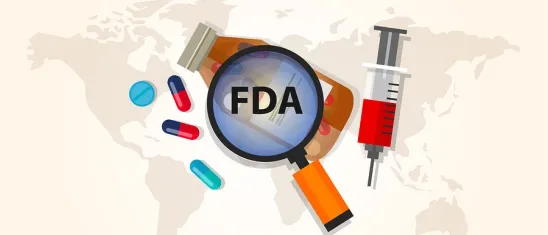FDA recently published its “Good Manufacturing Practice Considerations for Responding to COVID-19 Infection in Employees in Drug and Biological Products Manufacturing Guidance for Industry” (“Guidance”) which provides suggestions on managing the potential risk of products being contaminated by SARS-CoV-2, the virus behind COVID-19 infections for drug and biological product manufacturers, 503B outsourcing facilities, and 503A compounding pharmacies.
The Guidance builds on the current Good Manufacturing Practices (cGMPs) regulations for drugs and biological products, which require personnel with an illness that could adversely affect drug safety or quality be excluded from direct contact with drugs and drug components used in manufacturing.[1] As the Guidance states, preliminary research indicating that SARS-CoV-2 “is stable for several hours to days in aerosols and on surfaces,” and that it has an incubation period of 2 to 14 days, which are both factors that increase the risk of spread and introduction into products. The actual health risk is hard to calculate – FDA itself notes that there have not been documented transmissions through pharmaceuticals to date. The regulatory risk, however, is an easier formula – FDA has a clear expectation that drug and biological product manufacturers evaluate the potential for COVID-19 contamination of their products under existing controls, or risk being out of compliance with cGMPs.
The Guidance focuses heavily on undertaking a risk assessment of current systems to understand how effectively the firm can manage the risk of SARS-CoV-2 contamination, and augmenting systems as necessary to minimize risk. Key recommendations from the guidance are summarized below.
-
Documentation is essential. FDA makes a point to emphasize the risk assessment and risk management activities that are being done to address COVID-19 should be documented consistent with cGMP requirements. The emphasis on this point could foreshadow FDA investigators looking into COVID-19 responses on their next visit.
-
Manage personnel appropriately. Remove individuals who have or are most likely to have COVID-19 from activities where they could contaminate products and equipment, or make other employees ill. For those who have been potentially exposed to an infected individual, continued monitoring of health is crucial. Although not stated in the Guidance, an element of monitoring could be establishing a COVID-19 screening program on-site or in conjunction with a clinical laboratory.
-
Evaluate the adequacy of the cGMP controls already in place. These controls limit contamination and cross-contamination of drug components as the result of SARS-CoV-2 transmission from employees. This should include a review of controls related to facility and equipment cleaning and sanitation and other controls that ensure materials, APIs, components, drug product containers and closures, in-process materials, and drug products are safe and meet their quality requirements. For example, reviewing cleanroom process controls such as air filtration, positive air pressure and movement of air to ensure proper function, and current microbiological controls would all be essential.
Manufacturers of biological products – which are naturally more susceptible to viral contamination – may be ahead of the curve in terms of having systems in place, but a thorough evaluation is recommended for all manufacturers.
-
As needed, in addition to any other gaps that are identified, consider taking the following steps to improve cleaning, sanitization and personnel management:
-
Clean and sanitize nonproduction areas (such as offices, elevators, break rooms, changing rooms, and restrooms) more frequently.
-
Update existing procedures to institute more frequent cleaning, sanitization, and/or sterilization of surfaces in the production areas, particularly surfaces that are contacted frequently, such as door handles, equipment latches, bench/counter tops, and control panels. Special attention should be paid to sanitizing/sterilizing equipment and product contact surfaces.
-
Expand existing procedures to include using gloves, face masks, and/or gowning where such measures were not previously required.
-
Further restrict employee access to any manufacturing area, beyond that required by cGMP regulations and recommended by Agency guidance and normal practice, to limit the possibility of contamination.
-
Although not discussed in the Guidance, environmental testing programs, which look for SARS-CoV-2 in high-touch areas also could be helpful to managing risks.
The Guidance addresses actions that manufacturers should take if lots or batches of product are determined to be adversely affected by SARS-CoV-2, although FDA recognized that it is not aware of any such contamination to date.
Further, the Guidance addresses steps that manufacturers should take to mitigate the risk of product shortages due to an outbreak, including requiring social distancing and allowing recovering personnel to perform certain functions remotely (e.g., batch record review).
Though the focus of the Guidance is on traditional manufacturers that are subject to cGMP requirements, FDA also makes a point of reminding 503A drug compounding facilities that even though they are not subject to cGMP requirements, their products are subject to the general adulteration provisions against contamination. Given that compounded medications are often produced “on-demand” and used soon after preparation while live virus could be present on products, limiting the risk of contamination could be very important, and the guidance from FDA helpful in that regard.
[1] See, e.g., 21 CFR 211.28(d).




 />i
/>i

